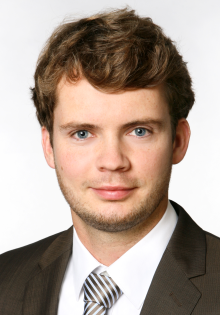Individualised medical technology
Laser-sintered furniture aids - individualisation through 3D printing.
Supervisor:
- Supervisor: Prof. Dr. Hans-Joachim Schmid
- Supervisor: N.N.
- Practice partner: N.N.
- Industry partners: N.N.
Motivation:
Additive manufacturing, colloquially known as 3D printing, offers decisive advantages over conventional manufacturing processes due to the tool-free, layer-by-layer material application. Complex geometries such as undercuts, closed cavities and functional components can be produced almost cost-neutrally, as only the CAD model of the component needs to be adapted. Another significant advantage derives from this fact - a high degree of customisation, which is also known in the industry as "customisation for free". In conventional medical technology, there is often a lack of individual aids for people with limited mobility. These are produced in a time-consuming and expensive manner using plaster casts and moulds, among other things, and have long production times. This supply gap can be closed cost-effectively and with short production times through additive manufacturing. In particular, the polymer laser sintering manufacturing technology offers itself due to the support structure-free and, compared to other additive manufacturing processes, more productive manufacturing. Furthermore, polyamide 12, the standard material of this technology, is biocompatible according to EN ISO 10993-1 and is certified for food contact.
Objective:
Additive manufacturing, especially laser sintering technology, is to be used to produce aids for people with limited mobility. The individualisation of the aids to the needs of the persons plays a superordinate role. Furthermore, the aids are to be designed in a process- and load-oriented manner. Therefore, in addition to individualisation, the aspects of lightweight construction and biomechanics also come into play. The post-processing of the laser-sintered aids plays a central role in the process-oriented design, so this is being specifically investigated. The post-processing depends on the respective application. For example, different surface roughnesses can be achieved or different coatings or colours can be applied. The load-compliant design can be supported by experimental investigations as well as FE calculations. An active transdisciplinary exchange can and should be achieved in particular with the users and manufacturers of mobility aids.
Procedure / Methods:
The aforementioned objective is approached at the outset through literature research on the topics of additive manufacturing in medical technology, the Medical Devices Act and biocompatibility. A research or benchmark on the post-processing of laser-sintered components follows. Various post-processing methods will be evaluated through experimental investigations. Experimental investigations will also be used in the future to examine the mechanical properties of laser-sintered components, among other things. The project will be accompanied and concluded by a case study, in the context of which a load-oriented design with the finite element method will be carried out if necessary.




